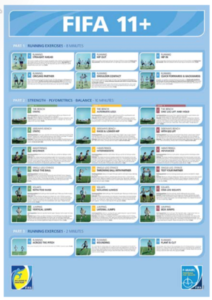Hamstring injury is a very common injury in a variety of sports, especially those that require high running speeds. It is the most common injury in AFL teams and professional football/soccer with annual I cadence of 4-15%. On average a team suffers 5-6 hamstring Injuries per season which results in a loss of 80 days of sports activities.
The hamstrings are so named because of the way in which European butchers use these muscles to hang the legs of slaughtered pigs to sell. The hamstring tendons are the tendons of the semimembranosus, semitendinosus, and long head of the biceps femoris, they are responsible for hip extension and knee flexion.
Injury can occur anywhere along the length of the musculo-tendinous unit, most injuries occur in the proximal portion. If the tendon is avulsed (pulled off the bone) and retracted surgery is typically necessary in sporting individuals.
Injury occurs during a high speed start, run or kick as the muscle and tendon undergoes a high energy eccentric contraction.
Diagnosis is usually obvious with the grade of injury being confirmed with MRI and ultrasound with X-rays being useful for avulsion injuries.
Important risk factors for injury are player age over 25yrs and history of previous hamstring, quad or calf injury. Hamstring injuries are up to 60% recurrent.
PREVENTION
The ideal approach is to use an exercise program that mimics load, range of motion and speed experienced during sports.
The best results in preventing injury have been found with the Nordic hamstring exercise program and the FIFA 11+ program (which incorporates the Nordic exercises along with other exercises for injury prevention).
Nordic Hamstring Exercise
No equipment is needed. The athlete kneels on a stable and comfortable surface while the partner stabilises the athlete’s legs, keeping them against the ground. With the hips slightly flexed, the athlete makes a controlled descent of the trunk toward the ground, taking as long as possible through the contraction of the hamstrings which produces an eccentric contraction of the muscle. The athlete can use their hands to cushion the fall to the ground and to push off to return to the starting position.

Incorporation of this exercise to a team’s strength and conditioning program can lead to a 51% reduction in hamstring injury.
FIFA 11+ Injury Prevention Program
This injury prevention program was developed by a group of international experts for FIFA to prevent injury in soccer players. They studied over 300000 players over the age of 14years. In adolescent players this program reduced non-contact injuries by 60%.
The program is a complete warm-up package that should replace the usual warm-up before all workouts at least twice a week.

FIFA 11+ has 3 parts, with a total of 15 exercises, which must be performed in the sequence defined at the beginning of each training session. The program takes 20mins.
Part 1: low speed running exercises, combined with active stretching and controlled contact between partners.
- Straight running
- Hips outwards
- Hips inwards
- Around the colleague
- Jump with shoulder contact
- Rapid running back and forth
Part 2: 6 sets of exercises focused on core and leg strength, balance and plyometrics/agility all with 3 levels of increased difficulty.
- Board
- Side board
- Thigh muscles
- Support on 1 leg
- Squat
- Jump
Part 3: Moderate high-speed running exercises, combined with fixation/starting movements
- On the lawn
- With jump
- Fixing and leaving
The main elements of FIFA 11+ are core strength, neuromuscular control and balance, eccentric training of the thigh muscles, plyometrics and agility.
SOURCE: ISAKOS Newsletter Volume 1 2021
